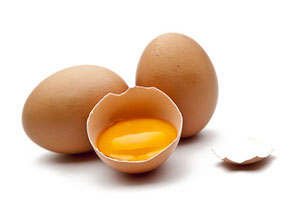IEC: Sensory marketing matters to the egg industry

During the IEC Edinburgh Conference in September delegates heard from Professor Charles Spence from Oxford University, about how important senses are in the marketing of eggs.
Professor Spence, who is a professor in the Department of Experimental Psychology at the University of Oxford, explained that sensory marketing works by stimulating as many senses as possible in the consumer and that the more senses you engage in your consumer, the stronger their link to your product becomes.
He went on to further demonstrate how our senses can be manipulated through an Experimental Lunch. During the delegate lunch on Thursday 11th September he assessed the impact of different styles of plating and cutlery on the delegates’ experience of food. Delegates were separated into two groups and each group was served a 3-course menu during which the impact of plating, cutlery, and plate type was assessed.
The menu for the 3 courses remained the same for the whole group but other changes were made. The plating of the starter differed between the two groups of delegates. For the main course the type of cutlery differed between the groups (lightweight and low quality versus heavy and high quality). For the dessert one group was served on a square black plate and the other on a round white plate.
The most interesting results were seen with the main course and dessert. The data for the main course revealed the delegates eating with the higher-quality cutlery enjoyed their main course significantly more, found it to be more artistically presented, and were willing to pay significantly more for it than those eating exactly the same food with the lower-quality cutlery. For the dessert, the delegates served on a square black plate enjoyed the dessert significantly more and rated it higher than those who were served on a round white plate. The analysis of data from the starter did not reveal any significant effect of the plating on the participants’ ratings.
Professor Spence’s results provide evidence to support the claim that the plate on which food is served, and the tools (i.e., cutlery) used to eat can exert a significant impact on the enjoyment and perceived value (both aesthetic and monetary) of the dish. He encouraged the egg industry to focus on the importance of our senses and perceptions and to utilise them in the marketing of eggs.
He also explained that typically marketers look at each sense separately, but that neuroscience is proving that all the senses are connected. He would encourage food marketers to understand that if they target the sound, appearance and smell, in addition to the taste of the food that they are marketing, then they can significantly enhance the consumers’ experience and enjoyment of their product.
A full copy of the report from Prof. Spence is available on the IEC website.
Join 31,000+ subscribers
Subscribe to our newsletter to stay updated about all the need-to-know content in the poultry sector, three times a week. Beheer
Beheer








 WP Admin
WP Admin  Bewerk bericht
Bewerk bericht